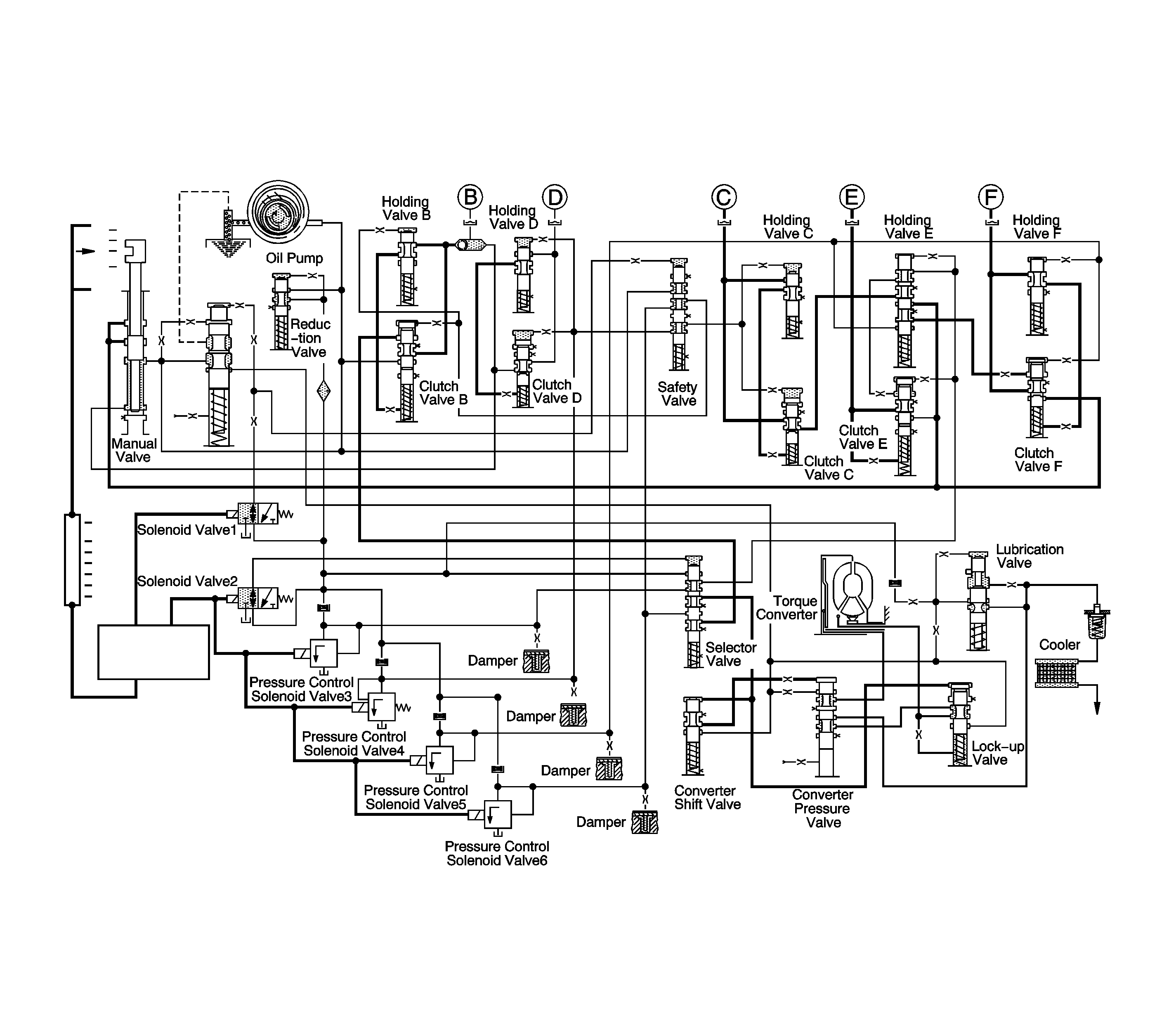
In reverse, transaxle drive is via the input shaft and clutch B. The elements of this transaxle function are as follows:
| • | Clutch B is engaged and drives the reverse sun gear in a clockwise direction. |
| • | The D band is engaged and holds the planetary gear carrier, front and rear, stationary causing the differential pinion to rotate clockwise. |
| • | The differential rotates in a counterclockwise direction. |
| • | The output shaft is driven in a counterclockwise or reverse direction. |
Clutch B Engaged
The line pressure, which is supplied by the oil pump, is directed to clutch B via the manual valve. The position of the check ball will change allowing direct pressure to clutch B.
Brake D Engaged
The line pressure, which engaged clutch B, is also supplied to clutch valve D.
In reverse, solenoid 1 is switched ON and pressure control soleniod (PCS) 4 is switched OFF. This will cause the fluid supplied to the reduction valve to flow to clutch valve D via the PCS 4.
The spool of clutch valve D will be depressed allowing fluid to pass to holding valve D.
Lock-up Clutch
Solenoid 2 is turned ON and the line pressure control valve spool will be depressed. Fluid will now flow through the torque converter pressure valve.
As a result, the oil pressure behind the converter lock-up clutch piston and in the turbine zone is equal. The direction of flow is through the turbine shaft and through the space behind the piston, to the turbine chamber.
Lubrication/Cooling
The lubricating valve ensures that the converter is supplied with cooling oil first if the pump rate is low. The lubricating pressure valve in addition guarantees that the necessary amount of cooling and lubricating oil is available via the bypass duct.
The fluid, which is supplied from the torque converter, flows to the cooler via the lubrication valve.
